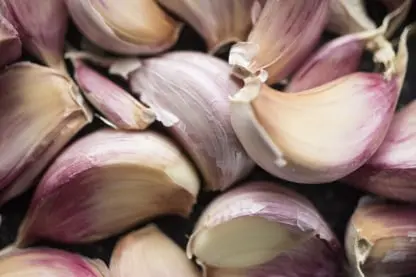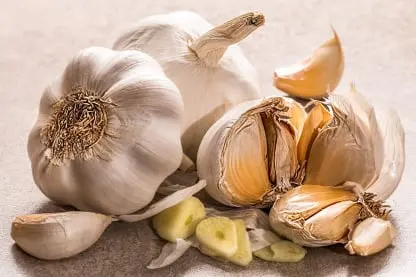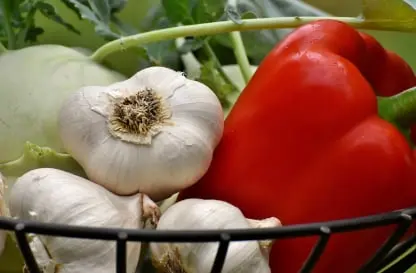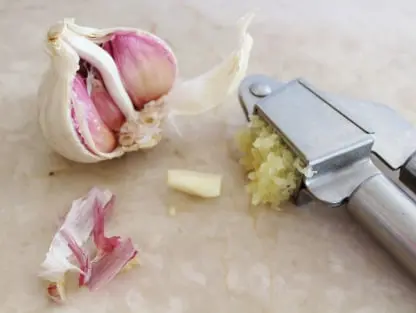Garlic packing app:
Garlic packing app for sorting, processing, garlic quality inspection, garlic storage, sales & distribution is made easy with Farmsoft's garlic packing software app.

Garlic Packing App for accurate order filling & production
View Packing App Specifications.
"Great opportunity for innovation in ginger and garlic through focus and specialization"
For the past 18 months Arie Havelaar and Sander Kleinjan have been building an impressive position in the world of garlic and ginger. Having been involved in these two products for most of their working lives, they have a solid grip on all aspects of the supply chain. Arie’s impressive network of contacts is particularly strong in the garlic and ginger regions of China. Sander on the other hand has been focusing on developing the supply base for ginger from Peru, Brazil, South Africa and other emerging ginger-producing countries.
They established Sawari Fresh International in March 2020. Arie: ‘From day 1 our focus on these two products exclusively has enabled us to take a strong position as ‘seed to table’ supplier. For years the popularity of these culinary products has been rising steadily, mostly due to new consumers’ focus on health and vitality. The Covid-19 pandemic accelerated the popularity. We also realized that the market was lacking specialization in keeping up with consumer demands in terms of food safety, quality, taste, and new innovations. The result is that we are creating a niche for Sawari by focussing on the latter – innovation."

Garlic packing app manages food safety
Garlic packing focuses on innovation has not gone unnoticed amongst their customers. ‘We were already well-positioned to supply retailers when we started Sawari. However, our combined experience of more than 50 years also enabled us to spot opportunities for innovation. For instance, we invested in state-of-the-art washing, drying, and packing machinery for ginger. This enables us to bring our product in bulk from our growers, and to prepare each retailer’s order on demand. The result is that our retailers receive Sawari’s products directly after the washing and drying process. This guarantees a product with a great quality profile: externally and internally. Our bulk transport from origin is also better in terms of sustainability, as it curbs the forming of mildew (and food waste) due to excessive moisture in cartons’.
Sawari’s interest in growing ginger closer to the market started more than 5 years ago when they initiated a test in Portugal. The results were so promising that almost immediately after starting up Sawari the two partners invested in a project to grow ginger in local greenhouses. The first crop (June to August 2021) proved their belief that growing ginger in Dutch greenhouses would produce a magnificent product with low fiber content and a pure taste. According to Arie they will be rolling out the first field tests in Portugal, Spain and France as soon their first-generation planting material has hardened sufficiently. ‘We are collaborating with Wageningen University, Vertify Research and a world-class laboratory to develop a variety that is perfectly suited to European growing conditions. Our main drive is to create products that have a real added value, including in processed form’ says Arie.

Garlic Packing App for reduced food & fresh produce waste
Bert van Gelder, senior account manager says that as the popularity of a product grows the competition heats up. ‘This means that we can never lose our grip and focus on getting (and keeping) the basics right. We start by having direct control over the source of our products. Our way of working enables us to conform to all food safety and social compliance standards. Our supply chain is transparent and efficient due to our close cooperation with growers. Thirdly, we create tailor-made solutions in special packaging, direct shipments and client-specific labelling. Finally, having perfected the art of packing ginger as close as it possibly can to the end consumer in Europe, we supply quality that is consistent and dependable’.
In line with its drive to innovate and to continue improving its environmental (food miles) footprint, Sawari is currently also conducting research and field tests to develop a process through which locally grown (Dutch) garlic can be turned into a dried, retail-ready variant.
Garlic Harvest & Packing
You are currently viewing Garlic Harvest & Packing
Garlic is a staple crop that does not get much credit. People use garlic when cooking at home, either fresh or in seasoning/powder form, but it is also included in dishes when eating out, sauces, salad dressings, seasoning on meats, etc. Garlic is everywhere! However, one thing that we do not think about often, is how garlic is grown, harvested and packed. Without that, there would be no staple crop.
When we used to live in Morgan Hill, we could always smell when it was the peak of garlic season in the nearby town of Gilroy (aka, the Garlic Capital of the World!). It has been a few years, so I was pretty excited when I went to visit Harris Fresh’s garlic operations in Coalinga, CA!

Garlic packing app manages supplier food quality and traceability
See below for a full step-by-step process of garlic harvesting and packing.
Garlic Harvest
The garlic harvesting process lasts for 2-3 weeks. When the garlic reaches the desired maturity in the field, a tractor goes through and undercuts the garlic. At that time, the workers go through and move four rows of garlic to form one larger row of garlic. The garlic remains in the field in this manner for 2-3 weeks to cure. The garlic is stacked together and mounds are formed along the sides to provide shade during the curing process.
Garlic Field
Garlic - Curing in the Field
Garlic Curing
During the curing process, the garlic dries in the field. After 2-3 weeks, the dryness is measured to determined when the crop is ready to harvest, which includes dry necks and outer skins. At that point, the garlic harvest crew enters the field.
The workers harvest the crop from the ground, while sitting down, and trim the bottom of the garlic using a hand tool and remove the upper portion of the garlic plant, and then place the heads into plastic 5 gallon buckets. Once 2 buckets have been filled, they are taken to the nearby wooden bins and are dumped. They can pass through a filter to remove some of the field debris prior to entering the bin. After dumping, the harvesters get their field tickets stamped.
Garlic Harvest - Cured Garlic in the Field
Garlic Harvest - Dumping into Bins
Garlic Harvest - Harvested Garlic
In this particular case, the garlic harvest workers are working at piece rate. This means that they are compensated based on how many buckets they harvest per day. However, if the workers do not harvest enough to earn minimum wage per hour, they are compensated at the minimum wage rate. This is very rare, and the workers often make significantly more money per day working piece rate compared to an hourly wage.